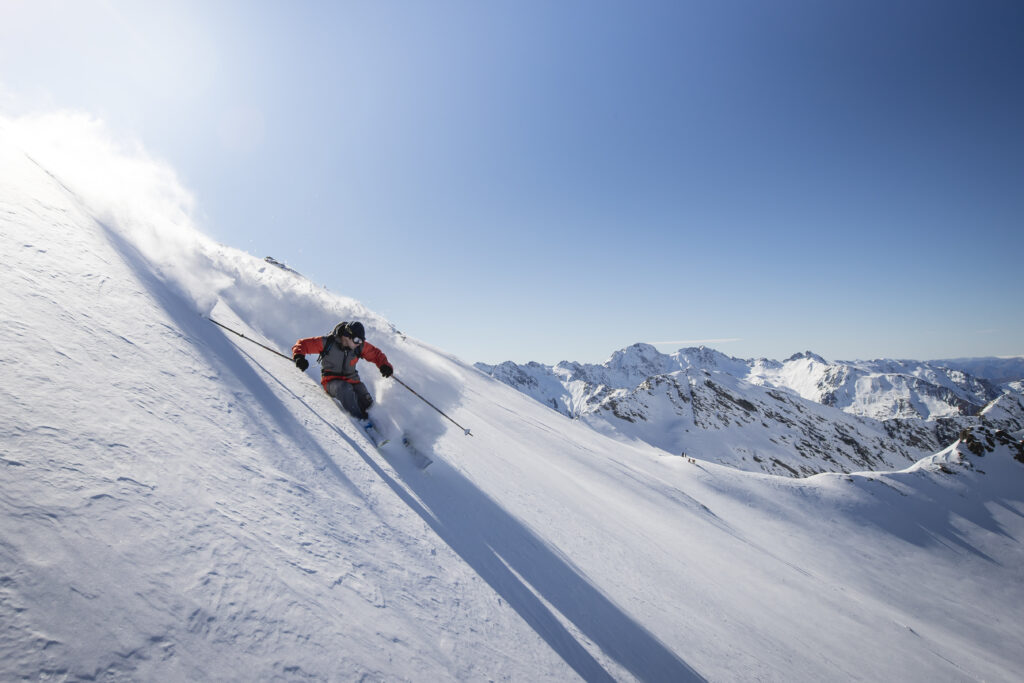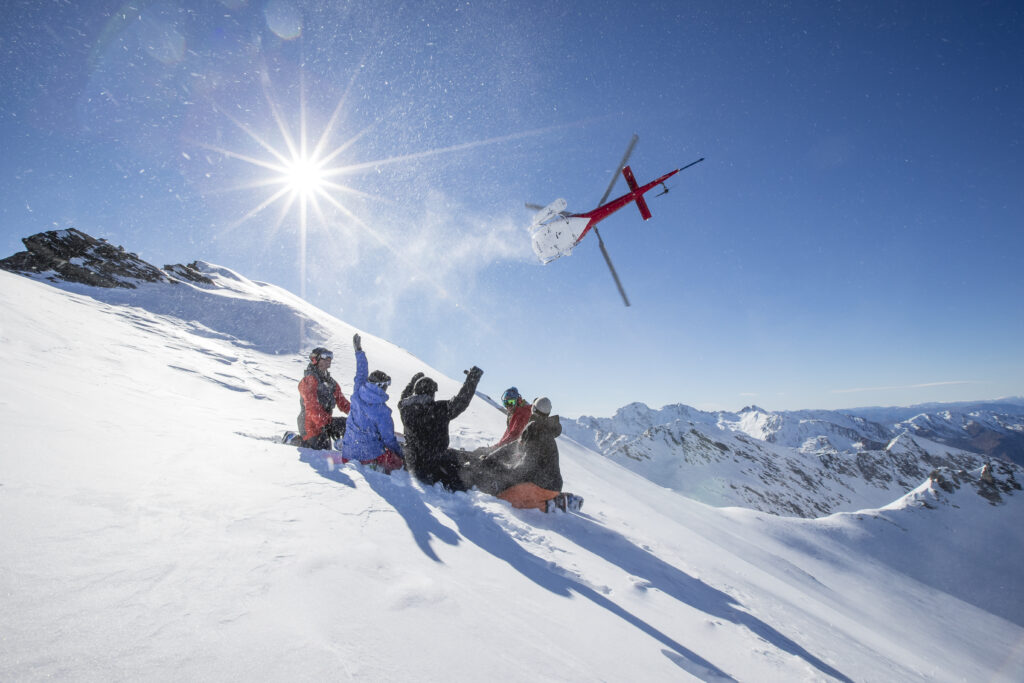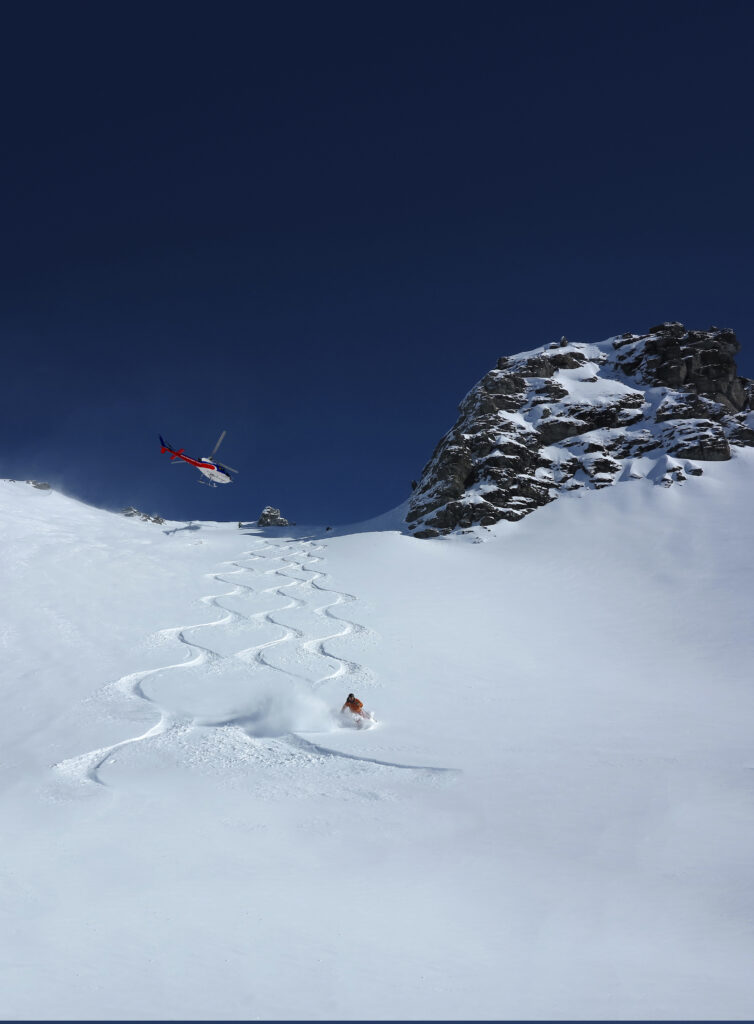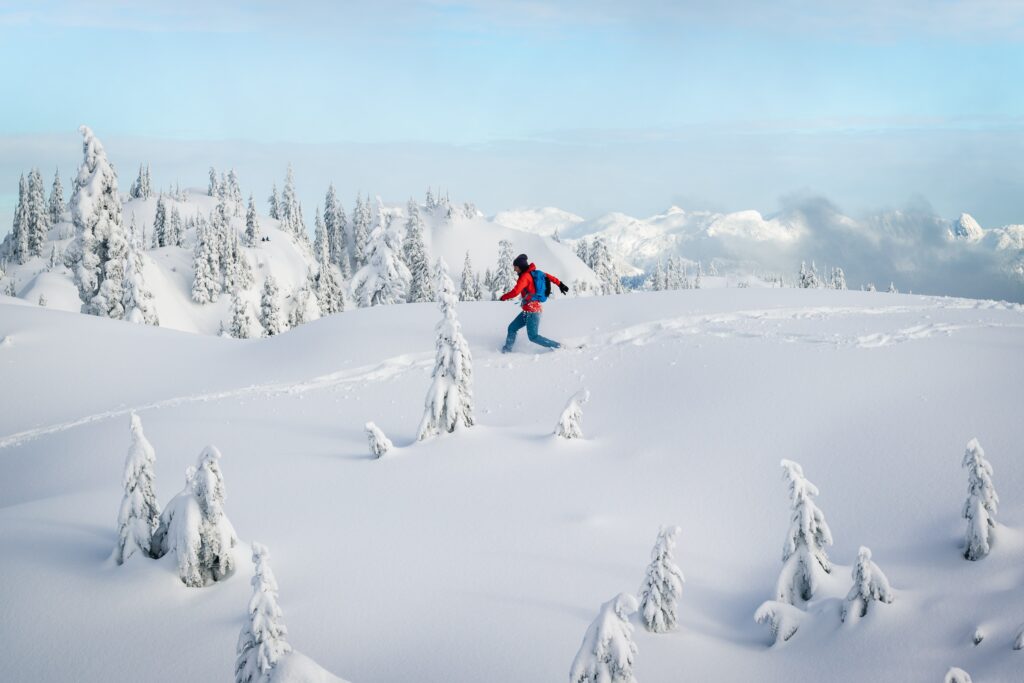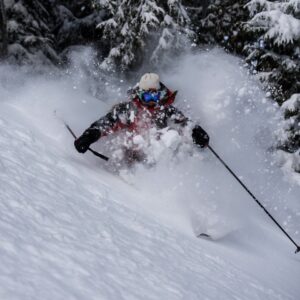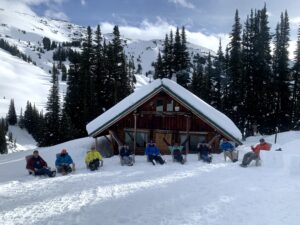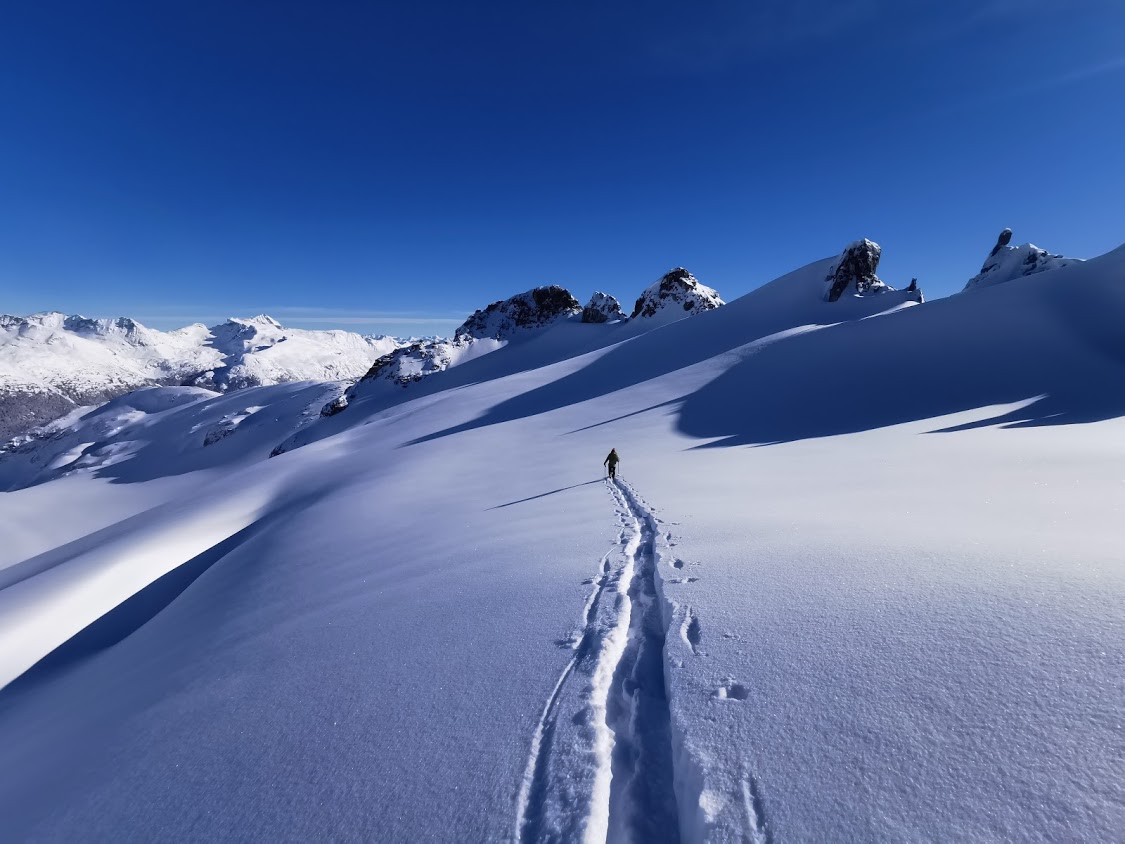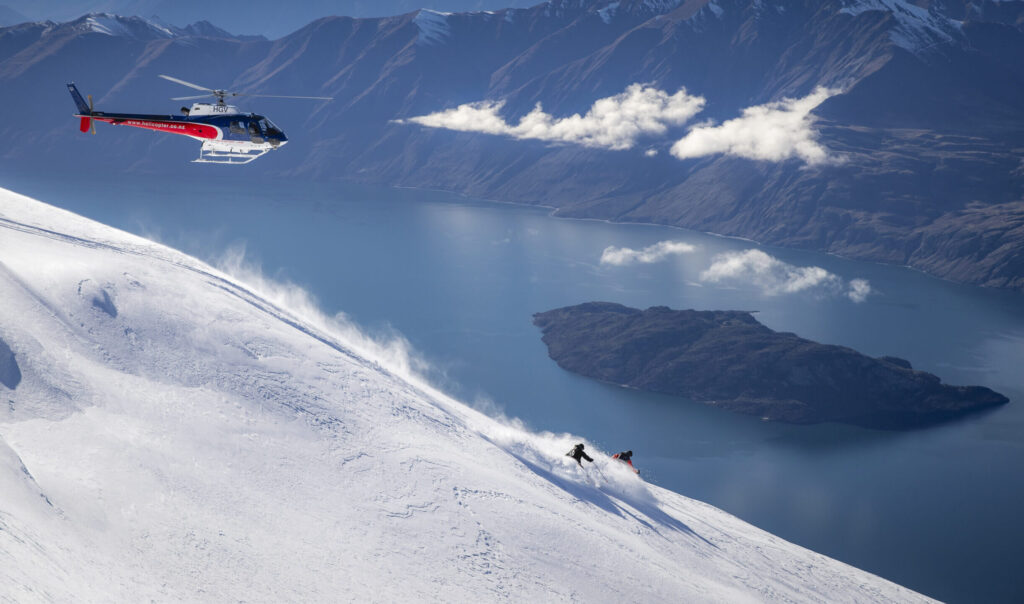
Whilst in the past you did have to be an exceptional skier to go heli-skiing (mostly because skiing powder on retro skinny skis takes skill and athleticism), the good news is that now heli-skiing is more accessible for a greater array of snow lovers… and we have new powder ski technology to thank for this. In fact, there are a few variables that affect your ability to heli-ski, so if you’re unsure about your skill level and whether you’re fit enough to tick heli-skiing off your bucket list, read on.
Have you skied off-piste before?
If you have no idea what off-piste is, then maybe you’re a ‘no’ for now, but if you can confidently ski or ride ungroomed, bumpy and variable snow conditions (slush, chopped-up powder and crud), then you’re looking good. If you regularly hunt down side-piste bumps, mogul fields and fresh powder – and manage to ski these with a semblance of confidence – then let’s get you booked in…
No one’s jumping out of helicopters.
Minimum ability: steep reds / easy blacks
You’re already looking good if you can make strong parallel turns with a pole plant, or link flowing uninterrupted turns on your snowboard, down a steep red or easy black run. If you can physically pull this off but are scared throughout, find yourself leaning back into the mountain, and moving slowly without flow, then it might be worth booking in a couple of off-piste lessons before taking on the chopper.
Not quite matching up to the descriptions above but desperate to get out and try it? Don’t worry, there are other options out there. Heli-skiing in New Zealand offers more mellow boot-deep powder runs rather than the knee or waist-deep powder you’d find in North America, making it a great option for a first heli-ski experience. For an even gentler experience, skiing the Tasman Glacier is a really exciting entry-level backcountry ski or snowboard day accessed by ski plane and suitable for intermediate skiers. Still too much? Why not take a helicopter to the top of a snow capped mountain where we can set up a gourmet lunch and wine tasting – the perfect way to break up a ski trip.
Just enough speed is your best friend in powder
You definitely do not need to be a speed demon to ski powder, but you do need to understand that without enough speed your skis or snowboard will sink down deep into the snow and make it really hard to turn. Before you know it you will be huffing and puffing, throwing your upper body around and not having a great time. Less is more in snowsports and while riding powder can be relaxing and effortless, it can only be so when you have enough speed for your skis or board to lift up out of the snow and float (just like a boat as it speeds up).
Some heli-ski terrain can be mellow with a similar gradient to blue and red runs in resorts and it’s likely that you’ll have your first few runs as a beginner heli-skier on such mountain faces. However, you will still need to have enough speed and athleticism to make turns in powder if you want to meet the helicopter at the bottom of the run. Get some tips on how to ski powder like a pro before you go.
You need to be relatively fit
I’ve seen competent (but fairly unfit) skiers crumble after a morning of heli-skiing, not because they couldn’t make the turns, but because they lost the stamina and physical conditioning they once had. If you are considerably overweight, with blood pressure issues and a history of heart failure – beware. You don’t need to be Ted Ligety fit, but you do need to be able to make a series of 30 – 40 two-footed side-to-side jumps without needing to chug a bottle of Gatorade and have a lie down after.
Powder skiing is very soft and floaty but for skiers to make turns you need to be able to make a small bounding movement which can take up a lot of energy. Also, if you are one of those people that leans back a lot, you might be inclined to do so even more when skiing powder. This is going to place a lot of strain on your quads and could end your days prematurely.
For snowboarders, it is a lot easier to make turns as the powder boards just glide effortlessly down the mountain; however, you do need to be good enough to navigate around trees and terrain features. You will also need to be skilled enough to keep your vision up and ride with enough speed so you do not get stuck in the natural dips and trenches of backcountry terrain. When you do get stuck (and it will probably happen) you might also have to take your board off and walk through some deep snow until you get to the top of the next fall line. Make sure your heart is up to the task.
Having the right equipment
Most operations have an artillery of the very best powder skis and snowboards on offer. If you are a heli-sports newbie you are best to use their rental gear as they will have much more powder specific equipment than the skis or snowboard you might bring along. I’ve seen a lot of people turn up with their own favourite ‘in-bounds powder ski/snowboard’, only to discover that it’s entirely inappropriate for deep snow.
Powder skiing in the resort bears zero resemblance to heli-skiing in the backcountry
Put simply, riding powder in the resort is more difficult. Firstly, the base under each new snowfall is much harder because of all the skier compaction in-bounds, so you often get thrown off balance when you hit hidden moguls and bumps. This won’t be an issue when you heli-ski.
Secondly, it’s pretty rare to ski more than a single run of uninterrupted powder in a resort because it gets tracked out so quickly (unless you’re skiing in Japan). After that, you are usually riding chopped up powder which is much harder than smooth unspoiled snow, and herein lies the reason why so many people get completely obsessed with heli-skiing – it really is the ultimate ski or snowboard experience.
I have so many memories as a heli-ski guide when I’d arrive at the bottom of a run and watch the look of pure joy and relief wash over the face of a new heli-skier. After months of getting worked up about avalanches and jumping out of helicopters, they’ve just skied their first run and realised just how mellow the terrain can be – and how smooth and effortless their turns were when they let themselves go.

